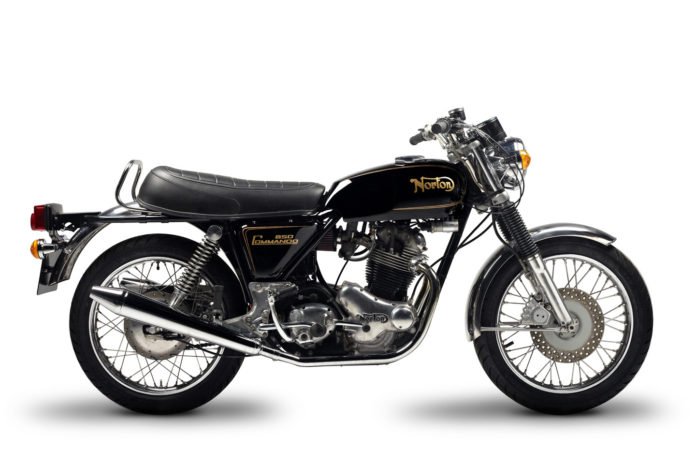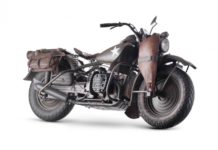During the mid 1960’s, the Japanese dominated the UK motorcycle market. Japanese motorcycles were cheaper, more reliable and had modern styling. British motorcycles on the other hand; were still based on almost thirty-year-old engineering and technology and had dated and unappealing styling. This caused the majority of British motorcycle manufacturers to struggle and Associated Motorcycle Company (AMC); the owner of Norton Motorcycles was no exception.
In September 1966, wealthy industrialist Dennis Poore; owner of Manganese Bronze Holdings (MBH); took over the financially struggling AMC and merged it with Villiers, one of the most successful maker of twin-stroke engines for motorcycles and other machinery, which he also owned, to form Norton-Villiers.
As the British motorcycle industry lacked any notable talent at the time; Poore hired Dr. Stefan Bauer from Rolls Royce, engineer Bob Trigg from Austin Cars, AMC’s chief designer Charles Udall, draughtsman Tony Dennis and Wally Wyatt and teamed them up with designers Bernard Hooper and John Favill from Villiers. Styling was assigned to design consultancy Wolff Olins. Poore set a target for the team to introduce a viable prototype at the Earl’s Court Motorcycle Show in September 1967 and have a production version ready for the 1968 season.
Coming up with an all-new engine to replace the aging and coarse Atlas engine was unrealistic, as R&D alone would take at least two years. Dr. Bauer decided to retire the legendary Norton Featherbed frame and house the Atlas engine in an all-new frame. The main challenge was overcoming the massive vibration created by the Atlas engine. The solution: the engine, the gearbox and the swing arm were tied in in one separate and contiguous unit and to eliminate the vibration; the whole unit was mounted on a series of bonded rubber bushes to isolate it from the rest of the frame. They named this solution: Isolastics.
The Norton Commando had the power and handling characteristics of the big British twins and was as vibration-free as 4-cylinder Japanese motorcycles. Its styling was modern and integrated. This combination of unique features was exactly what the public was waiting for and that helped the Norton Commando win Motor Cycle News’s “Machine of the Year” for five years in a row (1968-1972) and achieve the legendary status it enjoys today.
Norton-Villiers had a successful run with the Commando until 1977 when production ceased as a result of the company being placed into liquidation. However, the Commando will live on as one of the most iconic and desirable motorcycles of the twentieth century and for many it will always be remembered as the world’s first superbike.



